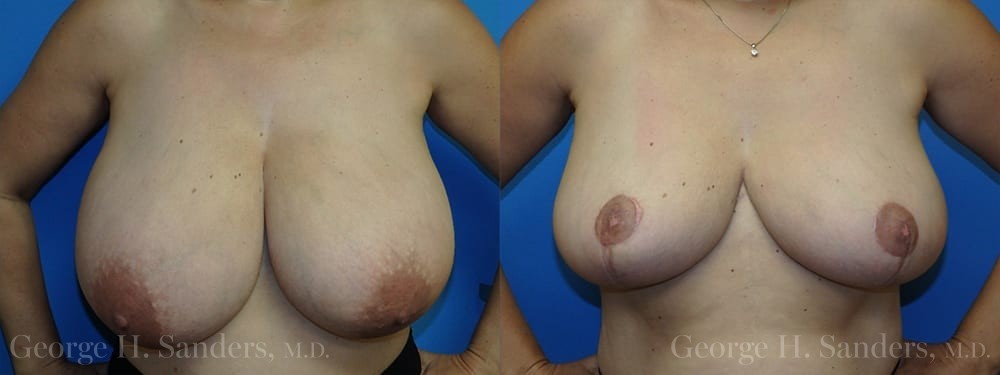
The choice to get breast reduction surgery is an important decision in many women’s lives. Although most patients who visit my office are asking how large they go with a traditional breast augmentation, there are many who are trying to go in the opposite direction.
Due to discomfort and other limitations caused by oversized breasts, some patients are asking how small you can go with breast reduction surgery. These women suffer from back, neck, and shoulder pain, as well as rashes beneath the breasts, painful bra strap grooves over the shoulders, and hunched posture that affects their ability to live a normal life. Patients requesting the procedure are often trying to get a breast reduction from a DD cup size to a B or smaller. These patients come to my Encino plastic surgery office and ask the same question:
“How Small Can a Breast Reduction Go?”
The answer to this question can be given in several ways:
First, How Small Should They Go?
A woman who has been quite large for many years will often find a significant reduction in size to be somewhat akin to a mastectomy! Also, women usually are desirous of a balance between their hips and their bust line. Although smaller breasts have their advantages, there may be a mismatch between hips and breasts that may be undesirable.
Smallest Breast Size Fact:
The smallest bra cup size is 28AA.
Second, How Small Can A Person Go With Breast Reduction?
The answer to that question has to do with the blood supply to the nipple area. There needs to be a large enough amount of breast tissue on which the nipple sits to provide an adequate amount of blood supply to the nipple. The blood supply comes through the breast tissue, and if there is not enough, the nipple will suffer from a lack of blood supply that can even lead to its loss. Various breast reduction techniques are employed that have as their goal the preservation of an adequate amount of blood flow to the remaining breast tissue so as to ensure survival of the nipple.
How Much Breast Tissue Needs To Be Left To Insure This Blood Supply?
There is not a hard and fast answer. The amount of breast tissue is not really the issue – it’s the amount of blood flow through it that reaches the attached nipple that’s important. Theoretically you could take away almost all of the breast tissue and leave the blood supply behind and you would be OK. The reality is that this would leave a funny looking breast. From a practical perspective, if you are going to reduce the breast by more than 3 full cup sizes (DDD to a C cup is 3 sizes), the nipple blood supply may be endangered.
Before & After Photos

View Our Breast Reduction Gallery
What Do We Do in Cases Where More Than 3 Full Cup Sizes Need To Be Removed?
I recommend that the nipple be removed, the breast be reduced without concern for the nipple blood supply, and then that the nipple be reattached as a skin graft.
To do this, a piece of skin in the circular shape of the nipple is removed from where the nipple is to go. The nipple is trimmed of all fatty material from its undersurface, and it is then applied to that spot and secured. Over the course of 5 days, new blood vessels will grow from the breast to the nipple, restoring its blood supply. The new nipple will be flatter, sensation will be reduced, and nursing will not be possible. On the other hand, these issues are worth it for many women who are troubled by large breasts.
Summary:
The answer to the question “How many cup sizes can I go down with a breast reduction?” is: as small as the patient would like, provided there is enough breast tissue to support the functions of the nipples.
Should you have further questions, please feel free to contact my office.





